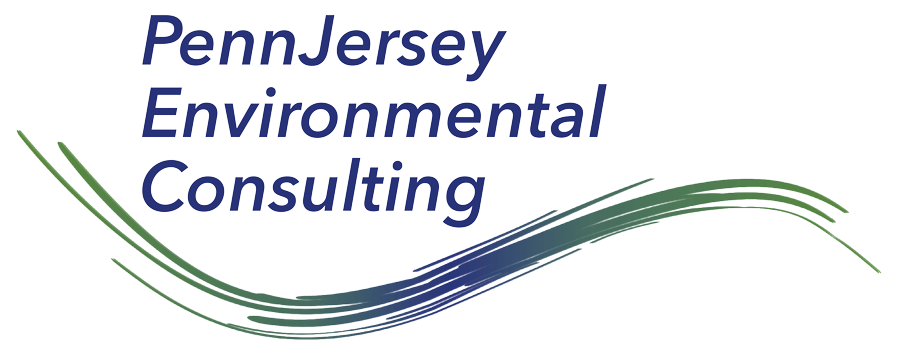NJDEP’s New PFAS Soil Remediation Standards – New Questions and Issues
The New Jersey Department of Environmental Protection (NJDEP) Contaminated Site Remediation and Redevelopment Program (CSRRP) adopted interim Soil Remediation Standards (SRS) for four of the roughly 8,000 per- and polyfluoroalkylated substances (PFAS) in the October 17, 2022 New Jersey Register at 54 N.J.R. 1980(a): PFNA (perfluorononoic acid), PFOA (perfluorooctanoic acid), PFOS (perfluorooctanesulfonic acid), and GenX (hexafluoropropylene oxide dimer acid and hexafluoropropylene oxide dimer acid ammonium salt). The Residential and Nonresidential Ingestion/Dermal and Migration to Groundwater (MGW) Leachate SRS were adopted. There was insufficient toxicology data to calculate the inhalation-based SRS. The interim SRS were discussed during the October 11, 2002 Site Remediation Advisory Group meeting, and NJDEP CSRRP’s slides can be found here.
The interim SRS were promulgated without stakeholder input or in the form of a formal proposed rule as provided in the CSRRP’s Remediation Standards regulation at N.J.A.C. 7:26D-6.2. These standards took effect immediately upon publication without a six-month phase-in as had the May 2021 readoption of the regulation. Specifically, the following SRS were adopted.
| Compound |
CAS No |
Residential Ingestion / Dermal SRS |
Non-Residential Ingestion / Dermal SRS |
Migration to Groundwater SRS |
Migration to Groundwater Leachate SRS |
|
mg/kg |
mg/kg |
mg/kg |
µg/l |
||
| PFNA |
375-95-1 |
0.047 |
0.67 |
AOC/Site Specific |
0.26 |
| PFOA |
355-67-1 |
0.13 |
1.8 |
AOC/Site Specific |
0.28 |
| PFOS |
1763-23-1 |
0.11 |
1.6 |
AOC/Site Specific |
0.26 |
| GenX |
13252-13-6 62037-80-3 |
0.23 |
3.9 |
NA |
NA |
As a result, NJDEP CSRRP is requiring that an Area of Concern (AOC) or site-specific MGW SRS be developed for each contaminated site. The implication is that there will not be a default value for PFAS to screen out low level contamination. This will place an additional and unnecessary capacity burden on the already stressed certified laboratory community. As part of their presentation, NJDEP shared data that a three-lab study of the SPLP extraction process showed ~95% PFAS recovery, but NJDEP did not carry their research to a logical conclusion by generating data for the Cohansey Sand – the most conservative scenario used for other compounds – to derive the desorption coefficient necessary to calculate the MGW SRS.
For the past several years, NJDEP CSRRP has, as a matter of policy, required that PFAS compounds be evaluated as part of key document and Remedial Action Permit submissions. The analysis of PFAS is not specifically addressed in the Technical Requirements for Site Remediation (TRSR) at N.J.A.C. 7:26E-2.1(c)2 when potential contaminants are unknown or uncertain; however, contaminants (i.e., hazardous substances) should be analyzed when their potential presence is indicated, as required in the TRSR at N.J.A.C. 7:26E-2.1(c)1. PFAS, PFNA, and PFOS have all been promulgated as hazardous substances listed under the Discharges of Petroleum and Other Hazardous Substances Rules (N.J.A.C 7:1E, Appendix A); however, GenX has not been so listed and can only be classified as a pollutant.
Now that there are interim SRS, the implementation of a soil sampling and analysis program raises significant questions that should be thought through by the remediating party and professionals alike. While there is adequate sampling guidance, including the Interstate Technology Regulatory Council (ITRC) June 2022 guidance, NJDEP CSSRP has not yet published the updated soil and groundwater sampling chapters for the Field Sampling Procedures Manual. There are several methods in use for the analysis of soils, including laboratory specific modifications of USEPA Method 537.1, USEPA’s draft Method 1633, which is still being validated by the agency, as well as Department of Defense and Energy methods. NJDEP is certifying laboratories for these methods, but there are varying lists of PFAS analytes beyond the four regulated compounds. The Data Quality Objectives may drive the need to consider the entire suite of common analytes depending on the circumstances, especially where the differentiation of different PFAS sources is needed. Additionally, NJDEP CSRRP has not developed a Data of Known Quality Protocol for the PFAS methods, resulting in the need to validate the analytical data using the laboratory-specific quality assurance requirements.
Given all of this, developing a thorough Quality Assurance Project Plan and Workplan, both required components of the TRSR at N.J.A.C. 7:26E-1.6(a) and 2.2 under the direction of an experienced environmental chemist is a critical step when the regulations and technology are evolving rapidly to assure the data are usable and defensible. These considerations, and others, especially including sampling as part of due diligence, should be discussed with the remediating party and knowledgeable environmental counsel prior to embarking on a soil sampling event. PennJersey has demonstrated experience in these areas and is available to assist.
